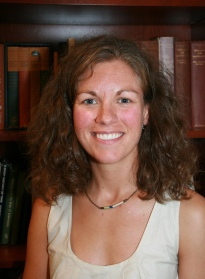
What is this course?
By the time you read this, I will have met the students in “Religious Dimensions in Human Experience: Between Animals and Gods.” In this completely redesigned dual-level (grad/undergrad) course, we will explore how people can know a single animal—the snake—as an
earthly creature and a supernatural entity. My students and I will work toward this objective by learning about snakes in a few different contexts. We will establish a baseline (and correct common misunderstandings) in conversation with biologists at Georgia State and ZooAtlanta before turning to snakes in Indian and Mesoamerican folkbiology and Hindu and Aztec religions.
I say we—my students and I—because I’ll be in it with them. I’m no expert on snakes, science, or Hinduism. I am at the beginning of a new research project that involves all three—plus Mesoamerican materials—and I’ll be learning alongside my students. (Well, hopefully slightly ahead of them.) I read recently that it’s good to model ignorance for students; my ignorance this semester is authentic. As are my questions.
Starting with my students at the beginning of understanding the materials we will study offers me an opportunity to model learning in my teaching. I don’t expect they’ll all adopt my methods, but I hope the approaches we use are diverse and interdisciplinary enough that most students will find useful tools, techniques, or theories along the way.
So that I’m not the only model, I’m inviting some experts in to our conversations. Biologists will come to class so that I don’t bungle phylogenetics. We’ll visit ZooAtlanta to talk to herpetologists and “meet” the snakes, and we’ll spend an afternoon at Emory University’s Michael C. Carlos Museum where students will see snake imagery in Hindu and Native American art. Plans are in the works to Skype with Indologists and ethicists writing about animals and religion, and students may interview some of these scholars for their podcasts.
 Did I mention that students will be creating podcasts? I am assigning podcasts as “reading” and writing. I am a longtime fan of shows like RadioLab, Death, Sex and Money and This American Life, and assigning multimedia “writing” makes sense to me because it invites students to be creative researchers and writers. My hypothesis is that writing for listeners—and an audience of their peers (not just the instructor)—will motivate students to engage more deeply in research and to produce more compelling “writing.”
Did I mention that students will be creating podcasts? I am assigning podcasts as “reading” and writing. I am a longtime fan of shows like RadioLab, Death, Sex and Money and This American Life, and assigning multimedia “writing” makes sense to me because it invites students to be creative researchers and writers. My hypothesis is that writing for listeners—and an audience of their peers (not just the instructor)—will motivate students to engage more deeply in research and to produce more compelling “writing.”
(Future blog posts from me will describe the podcasting assignments and link to some examples.)
What is this blog?
I am here to open a conversation about teaching new courses. I’ll be describing some of the challenges and surprises that happen over 14 weeks of reading new material, trying new assignments, and figuring out what works (and doesn’t). I’m inviting you in for a behind-the-scenes look at what happens as I plan and teach a new course. Pull up a screen and have your earbuds at the ready. Our introductory podcast episode is up, and you’re invited to listen in. Here goes!
This is the 2nd post in this series by Molly Bassett this semester (Fall 2015).